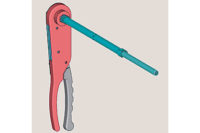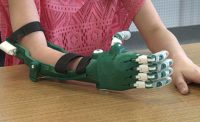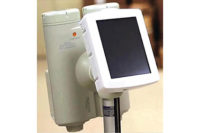In business since 1969, C&A Tool Engineering Inc. is a contract manufacturer of engineered components. The company makes implants, instrumentation and tools for the medical, aeronautical, defense, transportation and other industries at its 700,000-square-foot manufacturing facility in Churubusco, IN.
For many years, one of C&A’s toughest challenges was to produce high-quality, metal prototype parts cost-effectively. This changed in 2008 when the company began using an EOSINT M 270 direct metal laser sintering (DMLS) machine from EOS GmbH Electro Optical Systems.
Initially, Dick Conrow, founder and owner of C&A Tool Engineering Inc., restricted the machine’s use to making test parts. He had known of DMLS for several years and wanted to make sure that the technology had overcome its past shortcomings—most notably producing parts with material inconsistencies.
Conrow and his staff were so impressed with the machine that they purchased three more in 2009. All four machines are located within the plant’s medical-device pod, where they are used extensively for medical-device prototyping.
After a technician creates a 3D CAD model of a part, it is digitally sliced into thin horizontal layers. This model is downloaded to the DMLS machine.
Within the machine is a gas-tight process chamber where a recoater blade dispenses an initial 20-micron layer of metal powder over a 10-by-10-by-7-inch build platform. Using a fiber laser, the machine fuses the powder into solid metal to create the bottom layer of the part. The process is repeated to add successive, thin layers until the 3D part is finished. Building speed is 2 to 20 millimeters cubed per second.
Taller parts require more layers of material and a longer cycle time. C&A often splits large parts into two smaller parts to lessen their height and shorten cycle time.
Cycle time can last as long as 36 hours to produce a batch of good parts. Rob Marr, C&A’s general manager, says the machine creates parts that, metallurgically, are high quality and not porous.
Because the additive cycle must not be interrupted, C&A does all it can to prevent a power outage. On several occasions, the company delayed starting a job until a forecasted storm passed beyond the facility’s area.
Conrow likes the machine’s large build platform, which allows C&A to create many parts and dissimilar parts simultaneously. He also says the M 270 produces parts with integral features better and easier than a CNC machine tool.
A wide variety of materials can be processed by the M 270, including light alloys, super alloys and composites. EOS has also developed novel alloys especially for the DMLS process.
Besides prototypes, the M 270 can produce series production parts, spare parts, and tools. Its Direct Tool application eliminates tool-path generation and multiple machining processes.
“There is a key difference between CNC machining and additive manufacturing,” says Conrow. “Machining is the way to make one part, such as a gear. Additive manufacturing is the way to make the entire gear train.”
For more information on laser-sintering systems, call 248-306-0143 or visit www.eos.info.







